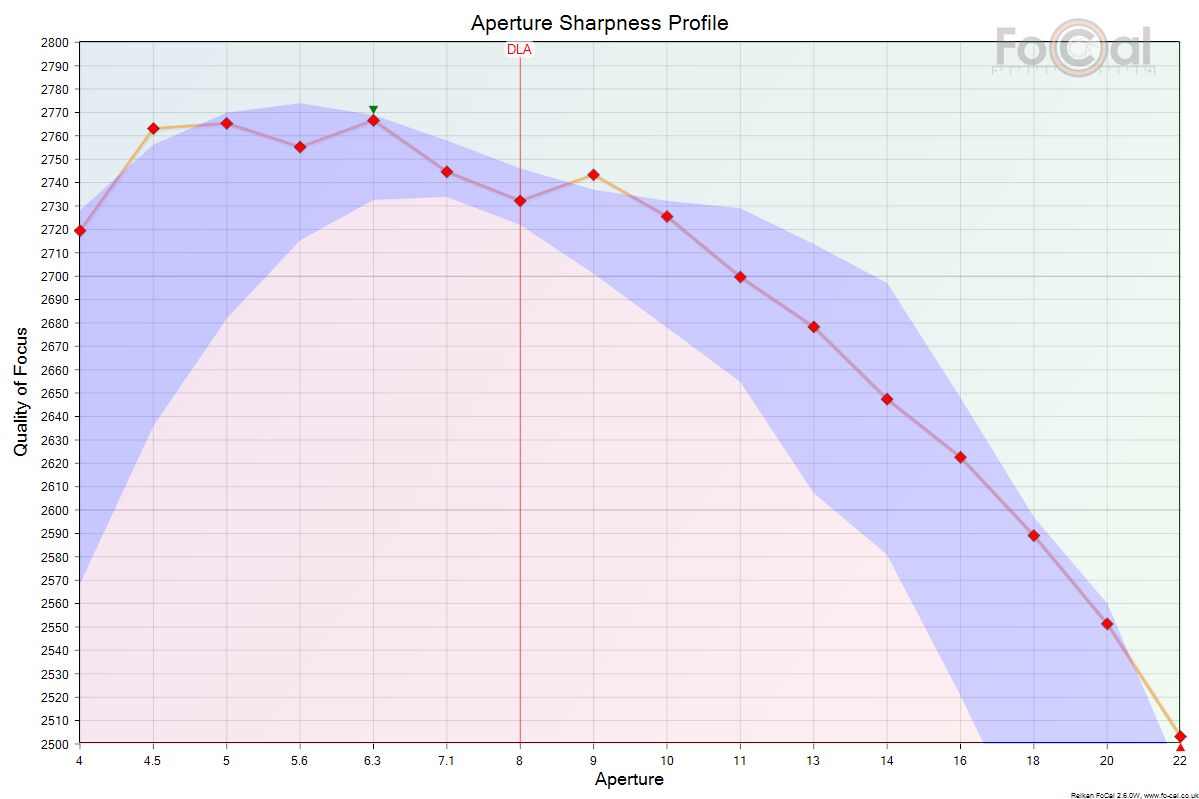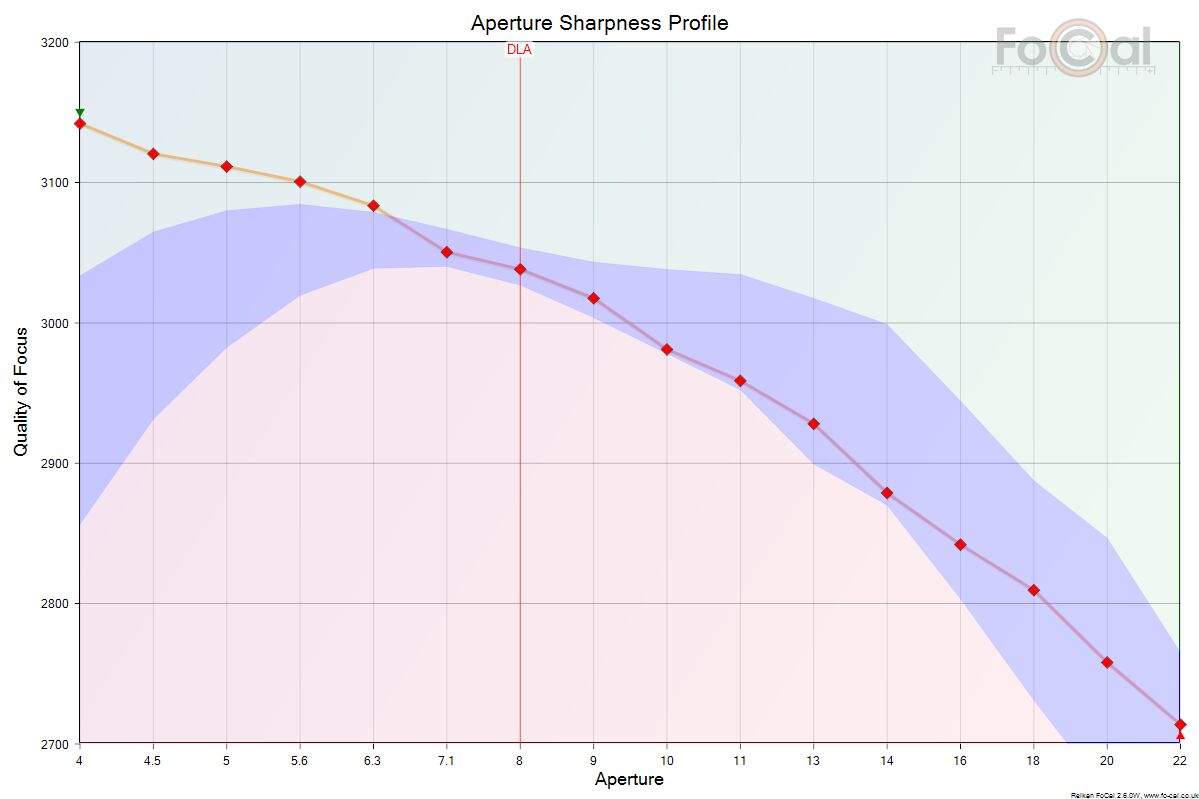Bryan Peterson vs. Diffraction
Dec 10, 2023 13:59:29 #
I'm revisiting Bryan Peterson's classic Understanding Exposure, and it reminded me how often he shoots at f/11-22. I obviously can't ask him why diffraction does not seem to be a problem for him, so I am asking here. Is diffraction at small apertures overblown as an issue? Is it more of a problem under certain conditions and less so under other conditions? A confused mind wants clarification.
Thanks,
Ben
Thanks,
Ben
Dec 10, 2023 14:26:29 #
Rab-Eye wrote:
I'm revisiting Bryan Peterson's classic Understanding Exposure, and it reminded me how often he shoots at f/11-22. I obviously can't ask him why diffraction does not seem to be a problem for him, so I am asking here. Is diffraction at small apertures overblown as an issue? Is it more of a problem under certain conditions and less so under other conditions? A confused mind wants clarification.
Thanks,
Ben
Thanks,
Ben
It depends on the context... my favorite answer for all of photography and life.
The smaller the sensor, the worse the diffraction at wider apertures.
If you are looking for it and comparing images of the same subject taken at the same time at different apertures:
Based on 20 to 25 MP sensors, diffraction annoyance starts:
> Around f/8 on Micro 4/3.
> Around f/11 on APS-C.
> Around f/16 on full frame.
> Around f/22 on medium format digital.
Higher megapixel count sensors may show diffraction at wider apertures.
Degree of enlargement matters.
Whether you're a pixel peeper, or not, matters.
Lens cleanliness matters.
Lens coatings matter.
Subject contrast and brilliance matter.
Lens corrections and sharpness matter.
Your experience may vary from mine, so it is recommended that each of us make our own tests to determine a "diffraction limiting aperture." I avoid using smaller apertures than those listed above, when I can.
I'll add that MEASURABLE diffraction occurs at wider apertures than those I listed, as evidenced by Tri-X' graphs, below. That's one reason I say, make your own tests to determine what you'll accept in your circumstances. I came up with my "rule of thumb" answer by doing that over the years.
Dec 10, 2023 14:27:33 #
Rab-Eye wrote:
I'm revisiting Bryan Peterson's classic Understanding Exposure, and it reminded me how often he shoots at f/11-22. I obviously can't ask him why diffraction does not seem to be a problem for him, so I am asking here. Is diffraction at small apertures overblown as an issue? Is it more of a problem under certain conditions and less so under other conditions? A confused mind wants clarification.
Thanks,
Ben
Thanks,
Ben
Instead of an opinion, let me offer acuity vs aperture graphs of a Canon 24-105 f4L at wide and tele FLs. and you decide (note that the acuity axis does not start at 0). If you really need the DOF of f16 or f22, then you’ll take the hit in sharpness, but keeping in mind that there is one. This is no different than knowing there’s a noise penalty for higher ISOs, but using them when needed (and trying to fix in post).Note this is a FF camera and lenses. Where diffraction becomes obvious is about a stop sooner in APS-C and 2 stops sooner in M43. You can now expect a number of pages of arguments - much like filter vs no filter.


Dec 10, 2023 14:35:53 #
Actually, I just reached the part in this latest edition of the book where he addresses the issue. His opinion is not to worry about it.
Dec 10, 2023 14:44:35 #
Rab-Eye wrote:
I'm revisiting Bryan Peterson's classic Understanding Exposure, and it reminded me how often he shoots at f/11-22. I obviously can't ask him why diffraction does not seem to be a problem for him, so I am asking here. Is diffraction at small apertures overblown as an issue? Is it more of a problem under certain conditions and less so under other conditions? A confused mind wants clarification.
Thanks,
Ben
Thanks,
Ben
There are easy two experiments you can perform to 'prove' diffraction:
1, Find a landscape situation, even just shooting down your street in the neighborhood. Set up your camera on a tripod and shoot in aperture priority mode. Compose an acceptable image, with focus set on something either 1/3rd into the frame or say a mid-point between foreground and background of the scene. Walk the aperture of the selected lens from wide-open through the smallest aperture. 1 or 2 frames per every aperture with no other changes. For extra credit, adjust the camera one-quarter turn so one of the corners of the frame passes through the horizon so you have 'details' in the corner.
2, Use a macro lens and select a detailed close-up subject, such as a flower or coin, similar. Again, set the camera on a tripod, walk the aperture from wide to smallest in aperture priority.
Take all these digital files and zoom to the 1:1 pixel-level details. Walk the images reviewing the same spot in every image at the 1:1 level of details. In the landscape, look at the far-off details in the 'upper corner'. Watch how, as the aperture gets smaller from wide open, first the details improve, then reach a maximum sharpness, and then get worse. As they get worse, you're seeing lens diffraction. Note the aperture where things get worse from the max / best sharpness in the distance corners.
The same macro / close-up digital images will do the same thing. Look at the specific point of focus and slightly around that point. Again, watch how things get better, stay sharp, and then begin to get worse as the aperture gets smaller and smaller.
Diffraction is not some urban legend off the internet. You can see for yourself, from the charts above or your own demonstration images. The urban legend is actually the false benefit of small apertures in digital photography, passed around as 'useful tips' by the likes of ancient classics like Understanding Exposure and half the UHH community.
Dec 10, 2023 14:45:21 #
Rab-Eye wrote:
Actually, I just reached the part in this latest edition of the book where he addresses the issue. His opinion is not to worry about it.
To some degree, he may be right. Lens manufacturers generally avoid including ridiculously small apertures in their designs. There are exceptions.
At Herff Jones Photography (defunct), we used Canon EOS 50D APS-C cameras with 15MP sensors. We used Tamron 28-75mm f/2.8 zoom lenses. Those performed their best around f/5.6. Most of the time we used f/8, for many reasons.
However, we had a number of "old-timer" film photographers who had used 8x10 view cameras to make large panorama prints of huge bands, graduating classes, fraternities and sororities, etc. They had been used to using f/64 for those, to get great depth of field. When they switched to digital, a number of them reflexively stopped the lens down to f/32! The resulting images were total mush. I had to print a range of tests and ship them out, illustrating why they did not need such small apertures. At 20 feet, 35mm zoom setting, f/8 was sufficient for more depth of field than we needed.
Dec 10, 2023 14:51:24 #
Rab-Eye wrote:
I'm revisiting Bryan Peterson's classic Understanding Exposure, and it reminded me how often he shoots at f/11-22. I obviously can't ask him why diffraction does not seem to be a problem for him, so I am asking here. Is diffraction at small apertures overblown as an issue? Is it more of a problem under certain conditions and less so under other conditions? A confused mind wants clarification.
Thanks,
Ben
Thanks,
Ben
Within your post is the assumption that f/11 to f/22 are *SMALL* apertures. Thaz an example of assuming too much. Its assuming that the lenses in question were dinky little lenses. On medium sized lenses f/11 to 22 are NOT small apertures and are not plagued by diffrection.
Dec 10, 2023 15:01:45 #
Rab-Eye wrote:
I'm revisiting Bryan Peterson's classic Understanding Exposure, and it reminded me how often he shoots at f/11-22. I obviously can't ask him why diffraction does not seem to be a problem for him, so I am asking here. Is diffraction at small apertures overblown as an issue? Is it more of a problem under certain conditions and less so under other conditions? A confused mind wants clarification.
Thanks,
Ben
Thanks,
Ben
I took a quick look at diffraction a couple years ago. Basically diffraction occurs at any finite aperture but sometimes it's more important than others. It spreads the light out a bit and the amount of spread depends on the aperture and the focal length. My observations were taken with a 105mm lens and a FX digital sensor. Other systems will present different results. Diffraction becomes noticeable when it starts to blur edges but images with slightly unsharp edges are not necessarily detrimental.
https://static.uglyhedgehog.com/upload/nt/2020/5/9/455146-diffraction_study_20200509.pdf
The final graph shows that for the lens/sensor combination used, f/16 produces around 0.3 pixels of spread. I consider that this could be noticeable, but not very. Shorter focal lengths should produce less spread.
Dec 10, 2023 15:07:56 #
It's worth bearing in mind that pin-sharpness is not a universal requirement. In many cases the softness that you get from diffraction is not obtrusive until it becomes extreme enough to obscure fine detail. How important a lack of pin-sharpness is depends on the context and the desired effect. Some situations are more diffraction-tolerant than others.
Dec 10, 2023 15:22:02 #
IMO diffraction is overblown as an issue. If you test lenses you will always see that F5.6-8 always looks better than F16-22 but in real world images there are a lot more factors to consider. Photography has always been a balance of compromisers.
Dec 10, 2023 15:23:34 #
larryepage
Loc: North Texas area
Rab-Eye wrote:
I'm revisiting Bryan Peterson's classic Understanding Exposure, and it reminded me how often he shoots at f/11-22. I obviously can't ask him why diffraction does not seem to be a problem for him, so I am asking here. Is diffraction at small apertures overblown as an issue? Is it more of a problem under certain conditions and less so under other conditions? A confused mind wants clarification.
Thanks,
Ben
Thanks,
Ben
Diffraction is an interference phenomenon that is always present in every lens at every aperture setting. There are a couple of different forms of it. It occurs at the outer edge of every lens element. It's usually not visible, but in this case the effect, if you could see it, would be stirring colirs around, reducing color rendition. At very small apertures, "two-edge" diffraction caused by interference between two closely spaced diaphragm edges. This can be fuzziness, or little tiny concentric dark rings ( really, really tiny), or something similar.
Before your eyes got old and presbyopic (far-sighted), you could have demonstrated two-edge diffraction by holding two fingers really close together and close to your eye and looking at the little slit of light between them. You could have seen the dark diffraction lines running parallel to your fingers.
Anyway...in the lens, there are two kinds of light...light that has been modified by diffraction and light that has not. At big apertures, most of the light has not been affected by diffraction. At small apertures there is a much smaller proportion of unaffected light, thus the potential problem.
Perhaps because I'm not a slave to sharpness, I've also never feared diffraction. I suspect that some folks see diffraction effects because they've been conditioned to believe that they are supposed to see them. It undoubtedly does occur in extreme cases. But I'll never not press the shutter release because exposure conditions indicate that my image sharpness might be affected by diffraction.
Dec 10, 2023 16:22:11 #
wdross
Loc: Castle Rock, Colorado
Rab-Eye wrote:
I'm revisiting Bryan Peterson's classic Understanding Exposure, and it reminded me how often he shoots at f/11-22. I obviously can't ask him why diffraction does not seem to be a problem for him, so I am asking here. Is diffraction at small apertures overblown as an issue? Is it more of a problem under certain conditions and less so under other conditions? A confused mind wants clarification.
Thanks,
Ben
Thanks,
Ben
As Burk at Burkphoto states, along with our many other member point out, it comes down to what we are willing to accept. The physics of diffraction is the same world wide. There are differences in lenses from the manufacturers that will, to some degree, affect the diffraction. But format is one of the biggest factors for diffraction. Shooting full frame allows one to avoid the noticeable affects of diffraction to much smaller apertures. It is a fact of physics which makes it a fact of life.
For Bryan Peterson to have photos at f11 to f22 showing very low diffraction is format oriented. Below is a 4/3rds photo that was handheld at 2 seconds (look at the clock). To get to 2 seconds, my program mode shifted the normal 200 ISO to 64 ISO and shifted to the maximum aperture f22 of the lens. The only way I could have used a wider aperture (like f8 or f11) was to use neutral density filters (didn't have any). There is no camera shake thanks to Olympus's lens and body IS. But if one pixel peeks the high contrast edges, they are not as sharp as one would want - due to diffraction. Here is f22 with diffraction because it is 4/3rds format. This is why most of us 4/3rds photographers shoot wide open, have lenses designed for wide open sharpness, and try to avoid shooting higher than f8/f11. 4/3rds lenses are somewhat basically designed differently from larger format lenses because of diffraction. It comes down to a photographer's picking their "poison" of format cons they want to deal with, diffraction being one of the cons. Don't want to deal with diffraction as a con, go full frame, medium format, or view camera (5X7 or larger).
Dec 10, 2023 16:41:54 #
burkphoto wrote:
To some degree, he may be right. Lens manufacturer... (show quote)
Herff-Jones is defunct, or just the photography part?
Dec 10, 2023 17:45:58 #
Rab-Eye wrote:
I'm revisiting Bryan Peterson's classic Understanding Exposure, and it reminded me how often he shoots at f/11-22. I obviously can't ask him why diffraction does not seem to be a problem for him, so I am asking here. Is diffraction at small apertures overblown as an issue? Is it more of a problem under certain conditions and less so under other conditions? A confused mind wants clarification.
Thanks,
Ben
Thanks,
Ben
Amazing the effects of quantum mechanics on photography. I have noticed diffraction in a few of my images. But it may have to do also with the subject to sensor distance and focal length of the lens used, and color and angle of the light. But with my Full Frame Camera and 100mm Macro Lens I notice this over many shots of different subjects over the months I have used the camera. f/11 - No Diffraction but it could use more depth of field. f/16 - No noticeable Diffraction, good depth of field, my usual stop for close-ups. f/22 - More, usually only for close-ups and macro, noticeable Differaction, image becomes less sharp and more fuzzy than at f/16. f/32 - tremendous depth of field but horrible Diffrection. Odd I did not notice that in my film days using a different F4 100mm Macro lens. No wonder Nikkors of old never went beyond f/16. Pentax has been supplying f/22 and f/32 on lenses for as long as I can tell. Including Takumar lenses from the pre-K mount days! Using PP software to sharpen can possibly reduce some diffraction but nothing can add DoF that was not in the shot to begin with. Like virtually everything else, it is a balancing act.

Dec 10, 2023 18:25:07 #
Person 1 - I shoot small apertures because I want sharp details in the background.
Person 2 - Do you know diffraction will lessen the sharpness of those details?
P1 - I don't care.
P2 - You don't care about what?
P1 - I don't care about diffraction.
P2 - But, if you care about sharp details, you probably should care about the impact of diffraction.
P1 - I don't care about diffraction.
P2 - I guess you don't really care about how to create sharp images either. Oh well. It's really so easy. If you ever do get interested, consider these ideas: How to obtain sharp images in digital photography
Person 2 - Do you know diffraction will lessen the sharpness of those details?
P1 - I don't care.
P2 - You don't care about what?
P1 - I don't care about diffraction.
P2 - But, if you care about sharp details, you probably should care about the impact of diffraction.
P1 - I don't care about diffraction.
P2 - I guess you don't really care about how to create sharp images either. Oh well. It's really so easy. If you ever do get interested, consider these ideas: How to obtain sharp images in digital photography
If you want to reply, then register here. Registration is free and your account is created instantly, so you can post right away.







